Before I started college, I’d learned that general education classes were something to dread. For some high school students around me, a lack of required gen eds is what drew them to certain private schools. When I started putting together my first semester schedule, I realized all the panic around gen eds was overdone and unnecessary. For each category of gen eds, there is a wide variety of options and I was able to find several classes I was genuinely interested in taking for nearly every category.
As this first semester winds down, I wanted to share my experience with the three general education classes I took this semester.
I am enrolled in AFAM 2267/HIST 2267 African American History to 1877 to fulfill my Diversity and Inclusion gen ed requirement of 3 hours. My professor, Dr. Ashely Howard, is wonderful. I wish I could actually interact with her in class, but I enjoy her asynchronous lectures. This class has given me a more complete and less sugar-coated understanding of slavery in this country than I received in junior high and high school. The discussions often focus on how history is told and how using sources from white slave owners has an influence on how we understand history. The content focuses on history from more than a century ago, but it has given me more information about how systemic racism and inequities Black people experience in this county began before the United States was even founded, and I’ve been able to connect that to modern events.
I am also taking THTR 1401 Theatre & Society: Romantics & Rebels to fulfill my Historical Perspectives requirement. I love this class. Like Dr. Howard, I wish I was able to interact with Professor Kim Marra in-person, because she seems like a lovely person. She always brings an upbeat attitude to the online lectures and really seems to care about her students, despite not really knowing us. This class has been so fun for me because I’ve been able to learn about historical events and social movements by reading the plays that came out of a particular historical context. In the discussion section my class will talk about the gendered, racial, existential, and political issues presented in the piece, and the ways theatrical choices in casting, setting, lighting, wardrobe and acting style are used to communicate a message. As someone who enjoys theatre and musicals, this has been an engaging way to learn about history. Next semester I am hoping to take another theatre class, Comedy and Society, to fulfill the Values and Culture gen ed requirement. Some of my favorite plays we have read so far are “A Doll House” by Henrik Ibsen, “Trifles” by Susan Glaspell, “Machinal” by Sophie Treadwell, and “Fences” by August Wilson.
Finally, I am taking CS 1020 Principles of Computing to fulfill my Quantitative or Formal Reasoning requirement. This class focuses on computer hardware, software, and developing basic skills with code, spreadsheets, and presentation programs. Quantitative and Formal Reasoning is the gen ed that also houses a lot of math classes. As someone who is uninterested in calculus and algebra, I was relieved that there were other ways to complete these gen ed hours. I’ll be honest, this class isn’t riveting. I prefer my other gen eds and my Media Uses and Effects course for my major more, because I am curious about social sciences and understanding human issues. Still, the work in this class has been manageable and I appreciate the chance to learn computing skills rather than solving arithmetic problems. Labs are due almost every week and there are easy to follow written instructions and tutorials that show you how to complete them step by step. You also have plenty of time to work ahead on the labs and they do not take long. Other graded work includes completion of virtual textbook readings and quizzes on the textbook material.
I am far from finished with all my gen ed requirements, but so far they haven’t lived up to the reputation that proceeds them as a huge burden. I appreciate that requirements for different categories of gen eds force students to consider classes they might not have looked at otherwise. Any high school student who is worried about completing these classes should look through the gen ed catalogue. Hopefully you can find something of interest in each category.

